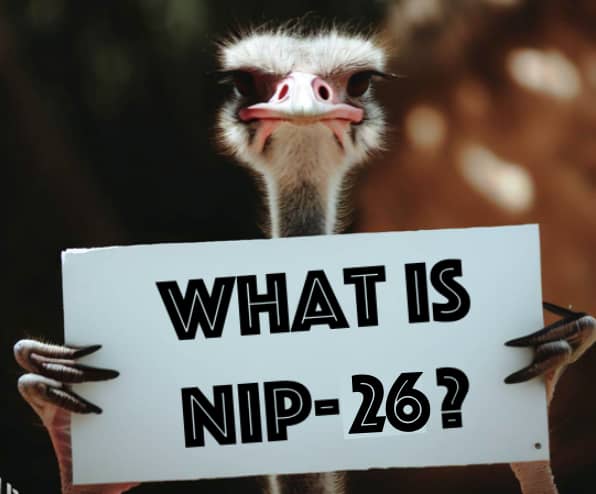What Is NIP-26? An In-Depth Look at Nostr Protocol’s Delegated Event Signing

In the realm of Bitcoin and decentralisation, Nostr Protocol has gained significant attention for its innovative approach to decentralised (?) event signing. One of the promising documents associated with Nostr Protocol is NIP-26, short for “Delegated Event Signing.” This document, currently in the draft stage, aims to define how events can be delegated and signed by other keypairs. Developed by Mark Harding and Minds, NIP-26 introduces a novel concept that has far-reaching implications for Nostr signing devices and the overall ecosystem.
Understanding NIP-26
NIP-26 serves a dual purpose within the Nostr Protocol framework. Firstly, it facilitates the delegation of event signing, allowing certain keypairs to sign events on behalf of the master key. This delegation capability not only enhances flexibility but also enables more efficient interactions with clients. Secondly, NIP-26 abstracts the use of “root” keypairs when engaging with clients. By doing so, it simplifies the overall process and enhances security measures.
NIP-26 and Nostr Signing Devices
Nostr signing devices play a crucial role in leveraging the capabilities introduced by NIP-26. These devices enable the creation of a master Nostr private key (?), which remains securely stored within the device itself. This master key serves as the foundation for generating numerous child keys, providing virtually unlimited possibilities for keypair creation. These child keys can be exported to various Nostr clients (?) or browser extensions such as Alby (?), enabling them to sign messages on behalf of the master key.
An important advantage of this approach is the resilience it offers in the face of compromised child keys. When a child key is compromised, it can be easily replaced with a new one derived from the master key. The master key, securely stored within the device, remains impervious to such compromises. By deleting the compromised child key from the client and introducing the new child key, the signing process can continue seamlessly. Additionally, the NIP-05 verification can be transferred to the new child key to maintain the human readable username.
A Step Towards Enhanced Security
With the introduction of NIP-26. Nostr Protocol takes a significant step towards enhancing the security of event signing within its ecosystem. By allowing the delegation of signing authority. The protocol not only provides flexibility but also mitigates the impact of compromised keys.
Delegated Event Signing
Delegated event signing, as proposed in NIP-26, enables the signing of events by keypairs other than the original signers. This delegation capability proves invaluable in various scenarios. For instance, it allows for optimisation of hardware wallets with Nostr compatibility. These devices can generate master keys that remain securely stored within them, while child keys are exported to clients or browser extensions. This separation of master and child keys provides an additional layer of security. Minimizing the impact of compromised child keys.
Abstracting ‘Root’ Keypairs
Another key aspect of NIP-26 is the abstraction of ‘root’ keypairs when interacting with clients. Traditionally, clients would require access to ‘root’ keypairs for signing events. However, NIP-26 introduces a more streamlined approach, where clients can interact with child keys instead. This abstraction simplifies the process for clients, reducing the complexity and potential security risks associated with ‘root’ keypairs.
Leveraging NIP-26 in the Nostr Ecosystem
NIP-26’s introduction has significant implications for the Nostr ecosystem, particularly in terms of enhancing security and enabling more efficient interactions. Let’s explore how NIP-26 can be leveraged within this ecosystem.
Nostr Signing Devices: A Secure Foundation
Nostr signing devices play a crucial role in implementing NIP-26’s capabilities. These devices allow for the creation of master Nostr private keys, securely stored within the device itself. From this master key, an unlimited number of child keys can be generated. Offering unparalleled flexibility for keypair management.
Exporting Child Keys
Once child keys are created on signing devices, they can be exported to Nostr clients or browser extensions. This exportation allows the child keys to be used for signing messages on behalf of the master key. By utilizing child keys, the risk associated with compromising the master key is significantly reduced.
Seamless Key Replacement
In the unfortunate event of a compromised child key, the process of key replacement becomes straightforward. By deriving a new child key from the secure master key stored within the signing device, the compromised child key can be replaced effectively. This ensures the continuity of the signing process while maintaining the integrity of the overall system.
Conclusion
NIP-26, the “Delegated Event Signing” document within the Nostr Protocol’s GitHub repository, represents a significant advancement in the realm of blockchain technology. By providing the framework for delegating event signing and abstracting ‘root’ keypairs, NIP-26 enhances security and facilitates more efficient interactions within the Nostr ecosystem. The utilization of Nostr signing devices, with their master and child key architecture, further reinforces the robustness of this approach. As Nostr Protocol continues to evolve, NIP-26 sets the stage for a more secure and streamlined future. Embracing NIP-26’s principles can pave the way for enhanced security and flexibility in event signing processes across various blockchain applications.